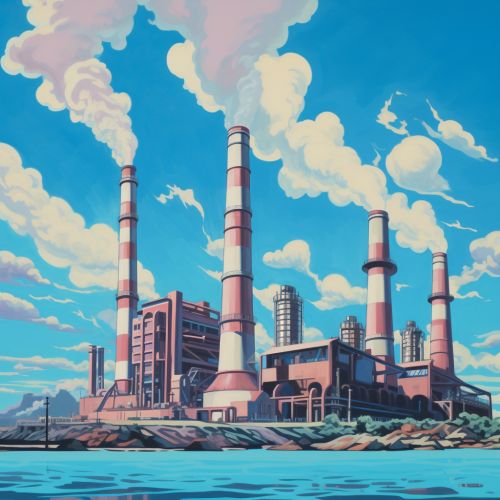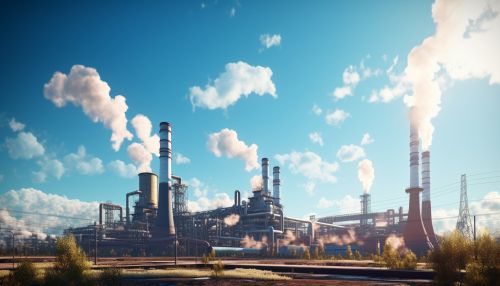Energy production
Overview
Energy production refers to the process of generating usable forms of energy from various sources. The energy produced can be used for a variety of purposes, such as powering homes, businesses, and industrial processes. Energy production is a critical component of modern society, as it enables the operation of various technologies and systems that are integral to daily life.
Types of Energy Production
There are several methods of energy production, each with its own advantages and disadvantages. These methods can be broadly categorized into two types: renewable and non-renewable energy production.
Non-renewable Energy Production


Non-renewable energy production involves the use of finite resources that cannot be replenished once they are consumed. This includes fossil fuels such as coal, oil, and natural gas, as well as nuclear energy.
Fossil Fuels
Fossil fuels are formed from the remains of ancient plants and animals that have been subjected to heat and pressure over millions of years. The energy stored in these fuels can be released through combustion, a process that involves burning the fuel in the presence of oxygen. This energy can then be used to generate electricity or power vehicles.
Nuclear Energy
Nuclear energy is produced through the process of nuclear fission, in which the nucleus of a heavy atom is split into two or more smaller nuclei. This process releases a large amount of energy, which can be harnessed to generate electricity. However, nuclear energy production also results in the creation of radioactive waste, which must be carefully managed to prevent harm to the environment and human health.
Renewable Energy Production
Renewable energy production involves the use of resources that can be replenished naturally over time. This includes solar, wind, hydro, and geothermal energy, among others.
Solar Energy
Solar energy is produced by harnessing the power of the sun. Photovoltaic cells, commonly known as solar panels, convert sunlight directly into electricity. Concentrated solar power systems use mirrors or lenses to focus a large area of sunlight onto a small area, generating heat that can be used to produce electricity.
Wind Energy
Wind energy is generated by converting the kinetic energy of wind into mechanical energy using wind turbines. This mechanical energy can then be converted into electricity.
Hydro Energy
Hydro energy, or hydropower, is generated by harnessing the energy of moving water. This can be achieved through the use of dams, which store water in a reservoir. When the water is released, it flows through a turbine, generating electricity.
Geothermal Energy
Geothermal energy is produced by harnessing the heat from the Earth's interior. This heat can be used to produce steam, which can then be used to generate electricity.
Energy Production and the Environment
The methods of energy production have significant impacts on the environment. Non-renewable energy sources, particularly fossil fuels, contribute to air pollution and climate change due to the release of greenhouse gases during combustion. Renewable energy sources, on the other hand, generally have a much lower environmental impact, as they do not produce harmful emissions during operation. However, the construction and maintenance of renewable energy infrastructure can still have environmental impacts, such as habitat disruption and resource use.
Future of Energy Production
The future of energy production lies in the development and implementation of sustainable and efficient energy technologies. This includes advancements in renewable energy technologies, as well as improvements in energy storage and distribution systems. The transition to a more sustainable energy system will require significant investment and policy support, but it is critical for mitigating the impacts of climate change and ensuring a sustainable future.
